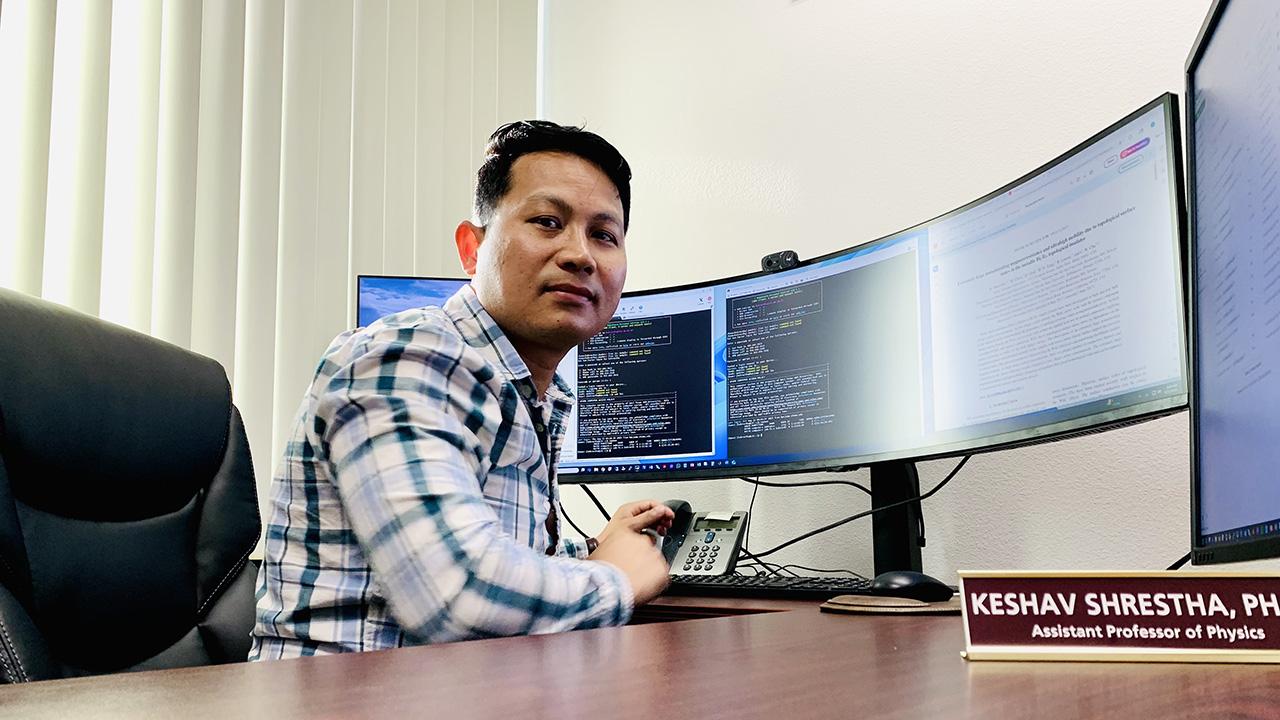
When ICTP alumni Keshav Shrestha began his PhD at the University of Houston in the autumn of 2010, he realized that his strong foundation in theoretical physics made both his coursework and research progress smoother. “I could engage my professors and classmates in deeper discussions on advanced physics topics,” he recalls. He credits this head start to the rigorous training he received through ICTP’s Postgraduate Diploma Programme.
Now a professor at West Texas A&M University, in the United States, Shrestha’s scientific career began in Nepal, his home country. After a bachelor’s and master’s degree in physics from Tribhuvan University, he joined ICTP’s Diploma programme in the condensed matter section. He says that year in Trieste gave him a solid theoretical background: “The knowledge they share at ICTP is world-class.”
Today, Shrestha’s research focuses on understanding the fundamental physics of superconductivity, magnetism, and topological phases of materials. His scientific work combines theoretical and computational approaches with experimental studies. “People at SISSA and ICTP are known for their work on DFT, density functional theory,” he explains, “And now I use DFT to provide theoretical support to my research, together with experimental evidence.”
After his PhD at University of Houston, he went on to postdoc positions at two leading US national laboratories: the Idaho National Laboratory and the National High Magnetic Field Laboratory. As a supervisor, he now takes his own students to laboratories like the Los Alamos National Laboratory and the National High Magnetic Field Laboratories, where they investigate how materials behave under extreme conditions: very low temperatures (below 4 K), high magnetic fields (up to 65 T), and high physical pressure (up to 2 GPa). “To interpret experimental results, you need theory in the background and computations to explain what is happening,” he says. “That’s why I always run DFT calculations before conducting experiments. Experiments are costly, and DFT simulations help predict potential outcomes, making simulations an essential step in the research process.”
Extreme conditions are necessary to observe quantum effects in materials. “At higher temperatures, classical physics dominates, so you don’t see quantum mechanics at play,” he explains. Quantum effects are at the core of many recent advancements in the physics of materials. Even when dealing with very complicated new results, Shrestha can always fall back on his solid understanding of the theory, a knowledge he gained thanks in part to his Diploma studies.
His next career step could be going back to Nepal. “I have always thought about it, even after my Diploma,” he recalls, “But I need a lot of resources for experiments, and I have to make sure that I will be able to access those if I move back.”
















